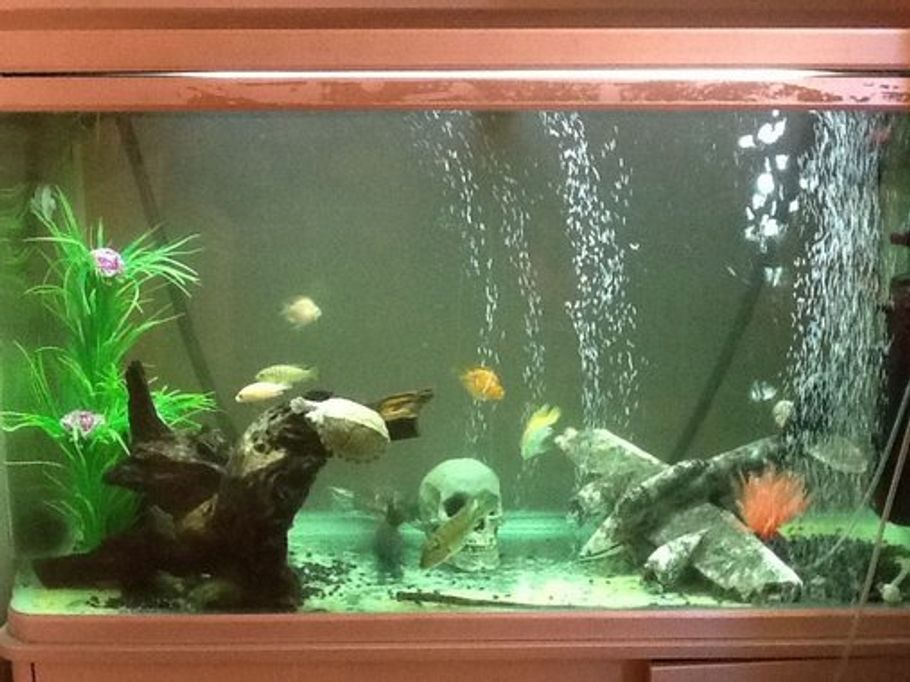No, you cannot have too much oxygen in a fish tank. Oxygen is essential for fish to breathe and they will die without it.
Quick Navigation
Can you have too much oxygen in a fish tank?
- Overfeed your fish
- This will cause them to produce more waste, which will in turn increase the amount of oxygen needed to break down that waste
- Use an air pump to aerate the water
- This will introduce more oxygen into the water, making it easier for the fish to breathe
- Put too many plants in the tank
- Plants produce oxygen as a by-product of photosynthesis, so having too many plants can result in an overabundance of oxygen in the water
- Add fish that are known to be high-oxygen consumers
- Species such as goldfish and bettas are known to consume large amounts of oxygen, so adding them to your tank can help deplete the oxygen levels
How Much Oxygen Should Be in Fish Tank
Aqua Ark’s “How Much Oxygen Should Be in a Fish Tank” article states that the amount of dissolved oxygen in a fish tank is an important aspect of water quality for fish. The article goes on to say that the amount of dissolved oxygen in a fish tank can be measured with a Dissolved Oxygen Test Kit, and that the ideal range for most freshwater fish is between 6-8 ppm (parts per million).

Credit: www.ratemyfishtank.com
How Do I Know If My Fish Tank Has Too Much Oxygen?
If you have a fish tank, it’s important to monitor the levels of oxygen in the water. Too much or too little oxygen can be harmful to your fish. Here are some signs that your fish tank might have too much oxygen:
-The water is bubbling excessively
-The fish are gasping at the surface of the water
-The fish are swimming erratically
-There is algae growth on the glass or decorations in the tank
If you notice any of these signs, it’s important to take action quickly. You can reduce the amount of oxygen in the water by turning off any air pumps or filters and letting some of the water out of the tank.
You should also avoid adding new fish to the tank until the levels of oxygen have stabilized.
Can a Bubbler Be Too Strong?
Yes, a bubbler can be too strong. If the bubbler is set on a high setting, the water can come out with too much force and splash around. This can be dangerous if you are not careful.
It is also important to make sure that the bubbler is not placed near any electrical outlets or cords.
Can You Have Too Many Air Bubbles in a Fish Tank?
If you have too many air bubbles in your fish tank, it can cause problems for your fish. The bubbles can make it difficult for the fish to breathe, and they can also get caught in the bubbles and be unable to swim properly. If you have a lot of air bubbles in your tank, you should try to reduce them.
How Much Oxygen Does a Fish Tank Need?
While the amount of oxygen a fish tank needs depends on the number and type of fish, as well as the size of the tank, a general rule of thumb is that you need 1 gallon (3.8 L) of oxygen per hour for every 10 gallons (38 L) of water. So, for example, if you have a 50-gallon (190-L) fish tank, you would need 5 gallons (19 L) of oxygen per hour.
One way to ensure your fish have enough oxygen is to use an air pump and airstone.
The bubbles created by the airstone will help aerate the water and keep it from getting stagnant. You can also add plants to your fish tank – they will help produce oxygen for your fish during the day through photosynthesis.
Another way to add oxygen to your fish tank is to do partial water changes regularly.
This will help to remove built up toxins in the water that can deplete the oxygen levels. When doing a partial water change, be sure to vacuum the gravel at the bottom of the tank to remove any waste that has accumulated there.
Conclusion
A fish tank can have too much oxygen if the water is not properly aerated. This can cause the fish to suffocate and die.
Leave a Reply